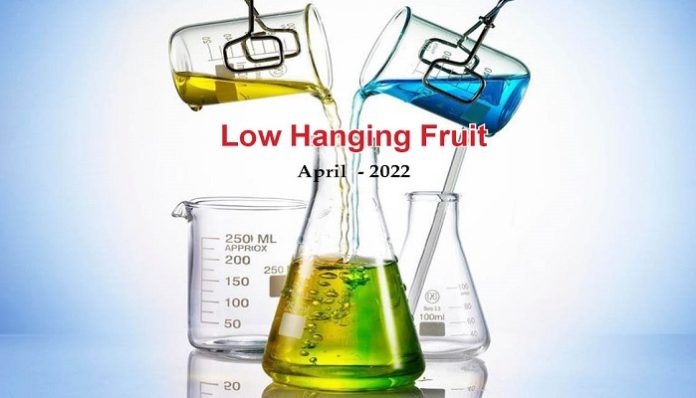Only in recent years has methane received adequate recognition of its role in global warming. Reducing methane emissions is a cost-effective strategy to mitigate global warming in the near-term and stay on course to meet the Paris Pact target of 1.5 degrees C. It is a low hanging fruit that can be ignored only at our peril.
Methane is the second most abundant greenhouse gas after carbon dioxide and accounts for 20% of global emission. Methane concentration in the atmosphere has more than doubled since preindustrial times, primarily due to human-related activities, and is currently at around 1800 parts per billion. Methane’s lifetime in the atmosphere is much shorter than carbon dioxide, but it has a higher heat trapping capacity. Over a 100-year period the global warming potential (GWP) of methane is 34 times more than that of carbon dioxide. Over a shorter window of 20 years, the GWP of methane is as high as 86. Methane is responsible for 30% of rise in global temperature since industrial revolution. Yet it has not been getting adequate attention with carbon dioxide garnering all the limelight. But there is now a sudden realisation that cutting down methane emissions is the best tool for mitigating climate change in the near-term. A report released by United Nations Environmental Programme (UNEP) last year says that it is possible to cut human-related methane emissions by 45% in this decade. This is equivalent to avoiding global warming by 0.3 degrees C and will keep us on course to achieve the Paris target of 1.5 degrees C.
Emission Sources
Human-related methane emissions come mainly from three sectors – agriculture, energy and waste management. In the agriculture sector, enteric fermentation in livestock and cultivation of rice are the biggest contributors of methane emissions. Energy sector accounts for 40% of anthropogenic methane emissions. In the energy sector, methane is released to atmosphere during the production, processing, storage and distribution of natural gas and oil associated gas. Coal mining is another big source of methane emissions. Methane is produced during domestic and industrial wastewater treatment and from composting and anaerobic digestion. Methane is also generated during decomposition of waste in landfills. Methane is also produced from a number of natural sources. Natural wetlands are the biggest emitters due to anaerobic decomposition of organic matter. China, USA, Russia, India, Brazil, Indonesia, Nigeria and Mexico account for nearly half of all anthropogenic methane emissions. But the sources of emission are different. In China, for example, coal mining industry is the biggest emitter of methane. Russia generates most of its methane during natural gas and oil production. In USA, livestock and landfills constitute the biggest source of methane along with the oil and gas industry.
Methane Tracker
International Energy Agency (IEA) has been championing tougher actions to reduce methane emissions. In 2019 it launched the “Methane Tracker” to reconcile the different and often conflicting information into a coherent set of data. This interactive tool, which focuses on the oil and gas sector, has become a widely accepted global reference. Using information gathered from satellite observations, IEA’s tracker has considerably enhanced our knowledge about methane emissions. It has revealed alarmingly high levels of underreporting of emissions. Satellite mapping has made it possible to identify massive plumes of methane from oil and gas fields across the world. But satellite coverage is still far from complete. IEA’s report this year includes country by country breakdown of emissions from oil and gas industry, coal mining and use of bio energy. The difference in the intensity of methane emissions from fossil fuel operations from country to country is startling, with the best performers being 100 times better than the worst. As per the report, the global emissions of methane from the oil and gas sector will reduce by 90% if all countries were to match the emissions intensity of Norway, the best performer.
EU Proposals
In December 2021, European Union unveiled proposals to regulate methane emissions in the energy sector. These relate to emissions from exploration, production, processing, distribution and storage of oil and gas. It also includes provisions for methane emissions from coal mines. The proposals set out requirements for reducing emissions, monitoring and reporting, leak detection and puts limits on venting and flaring. The proposals would make it mandatory for operators to prevent and minimise methane emissions by any and all means available to them. It requires operators to develop and implement a Leak Detection and Repair (LDAR) programme and send reports to competent authorities at periodic intervals. Operators would be obliged to repair or replace the components where methane leaks are above 500 ppm within 5 days of their detection. The regulations prohibit routine venting and flaring. Venting would only be allowed in emergency when flaring is not technically feasible or endangers the safety of personnel. Such emergency venting and flaring should be reported to certified authorities within 48 hours. While installing new flare stacks or replacing or refurbishing existing ones, operators would be obligated to install continuous pilot to ensure complete destruction of hydrocarbons. Implementation of many of EU’s proposed mitigation measures have low costs; some even have negative costs due to the methane saved.
Success Stories
In a first of its kind, ExxonMobil has very recently got one of its facility in New Mexico, USA certified for methane emissions management. The third party certification validates the company’s measures to reduce methane emissions. ExxonMobil has managed the reduction through a combination of fixed monitoring systems, aerial imaging technology, optical gas imaging cameras, acoustic sensors, as well as leak detection and repair practices. We can expect to hear more such positive developments from industry majors in the coming months. Last November at the COP26 in Glasgow, The Global Methane Pledge was launched by more than 110 nations. Led by EU and USA, the participants agreed to reduce human-related methane emissions by 30% by 2030. But many major emitters, including China, Russia and India, are yet to join the movement.
Epilogue
Methane concentration is rising in the atmosphere more rapidly now than at any time since the 1980s. Methane has an atmospheric longevity of 12 years, which means taking prompt actions now is the best strategy to decelerate the rate of global warming in the near-term. It is becoming increasingly evident that the Paris pact’s target of 1.5 degrees C cannot be met at a reasonable cost without cutting down methane emissions by 45% by end of this decade. Reducing methane emissions is a low hanging fruit in our war against climate change and we should not miss the opportunity to grab it gleefully. It would not be out of place to state that behavioural changes like changing dietary habits and reducing food wastage will also go a long way in mitigating methane emissions.
Readers’ responses may be sent to:
k.sahasranaman@gmail.com or
chemindigest@gmail.com
































